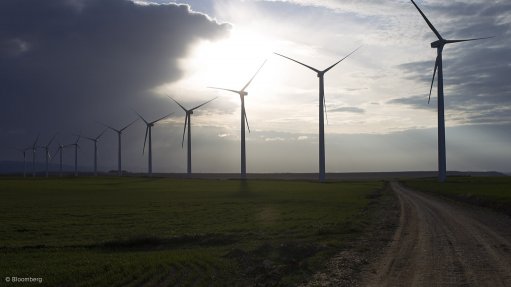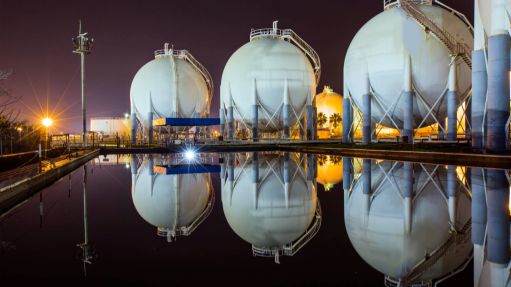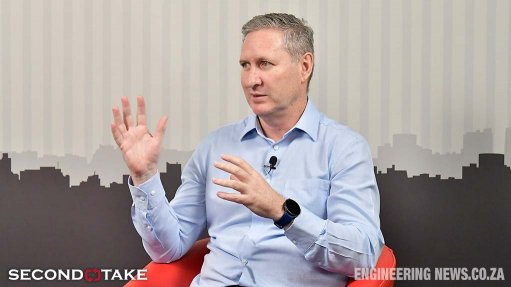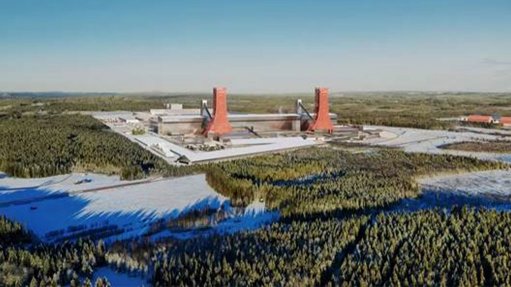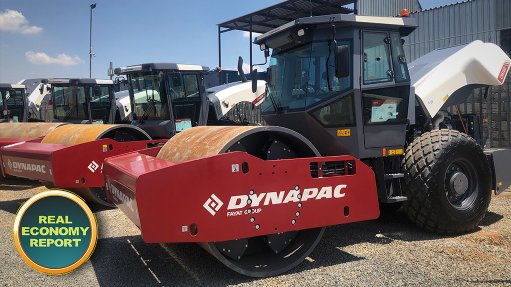South Africa needs more renewables – De Ruyter
Meeting air quality standards would warrant Eskom decommissioning as much as 16GW of its coal-fired power stations immediately, which would exacerbate load shedding to unprecedented stages, according to CEO André de Ruyter.
De Ruyter on Wednesday laid out Eskom's vision for a just energy transition at the Africa Renewables Investment Summit, held in Cape Town.
For Eskom, it is unlikely new coal power projects will be built. They're up to four times the cost of renewables like wind and solar, take about 10 to 12 years to become operable and would negatively impact the competitiveness of South African exporters, who will face taxes for the carbon content of their products.
The power utility, however, is battling with ageing coal plants, which are unreliable and have resulted in unplanned breakdowns that contribute to load shedding.
What's more, Eskom's existing fleet is not compliant with Minimum Emissions Standards. A high court earlier this year ruled that the poor air quality in the Highveld Priority Area - which covers parts of Gauteng and Mpumalanga and where 12 of Eskom's power stations are based – violates human rights.
To meet the emissions requirements, Eskom would have to decommission as much as 16 GW immediately – which would add to load shedding woes, De Ruyter explained. Eskom's modelling shows that 30 GW would have to be decommissioned by 2025 to meet the requirements. This would translate into 100 000 job losses and Stage 15 load shedding.
"… Stage 15 load shedding. I don't want to know what that looks like," De Ruyter said bluntly.
The alternative is to retrofit the stations with technologies that remove carbon and sulphur dioxide emissions. At R300 billion, it's a cost Eskom can't take on – and if it did, it would be passed through consumers in electricity tariffs.
"We will have cleaner air, but it will come at a significant cost."
DECOMMISSIONING STATIONS
But Eskom can't avoid the inevitable – and that is coal-fired power stations will have to be decommissioned when they reach the end of their life – some of which will be within the next 15 years.
"Mechanical equipment has a finite lifespan. If we do nothing, it will precipitate significant job losses in the coal value chain," De Ruyter said.
The power utility plans to soon decommission the last unit at Komati - which started operating in 1961. Even if Eskom wanted to keep the unit going beyond October it would not be legal to do so, explained De Ruyter – as it is becoming unsafe to operate, which would make the power utility liable for any accidents.
Eskom has been running a programme to repurpose the station – with 150 MW of solar, 70 MW of wind and 150 MW of battery storage capacity. The power utility has also established a containerised micro-grid assembly factory at Komati. It also recently secured about R38-million in funding to establish a training centre at Komati to help reskill and upskill workers and the surrounding communities to participate in the renewable energy industry.
Eskom's solution is to support renewables' rollout, which can help reduce emissions while also bulking up available generation capacity and ensuring job creation.
Among these efforts include leasing of the land to renewable energy producers – Eskom expects to sign agreements within the next two weeks and they would add about 2 000MW to the grid, De Ruyter said. Eskom plans to go to the market every quarter, offering its land for lease for the use of renewable energy producers.
Eskom has also launched three procurement programmes to add 1 000MW to the grid on an urgent basis. It aims to buy power from companies, existing independent power producers and neighbouring countries.
The power utility also expects additional capacity to come from Kusile - once complete - it will add 1 440 MW to the grid. Eskom also wants to revive a plan for a 3 500MW pumped storage project - beyond 2024.
Other sources of capacity besides Eskom includes municipalities - set to procure as much as 1 500 MW from independent power producers. When large industrial users like Sasol and mining companies finalise their power solutions - it will also ease pressure on the grid.
"Over the next two to three years, you will see significant capacity coming onto the grid. We are pulling all the levers ... all of them that are at our disposal," said De Ruyter.
Comments
Press Office
Announcements
What's On
Subscribe to improve your user experience...
Option 1 (equivalent of R125 a month):
Receive a weekly copy of Creamer Media's Engineering News & Mining Weekly magazine
(print copy for those in South Africa and e-magazine for those outside of South Africa)
Receive daily email newsletters
Access to full search results
Access archive of magazine back copies
Access to Projects in Progress
Access to ONE Research Report of your choice in PDF format
Option 2 (equivalent of R375 a month):
All benefits from Option 1
PLUS
Access to Creamer Media's Research Channel Africa for ALL Research Reports, in PDF format, on various industrial and mining sectors
including Electricity; Water; Energy Transition; Hydrogen; Roads, Rail and Ports; Coal; Gold; Platinum; Battery Metals; etc.
Already a subscriber?
Forgotten your password?
Receive weekly copy of Creamer Media's Engineering News & Mining Weekly magazine (print copy for those in South Africa and e-magazine for those outside of South Africa)
➕
Recieve daily email newsletters
➕
Access to full search results
➕
Access archive of magazine back copies
➕
Access to Projects in Progress
➕
Access to ONE Research Report of your choice in PDF format
RESEARCH CHANNEL AFRICA
R4500 (equivalent of R375 a month)
SUBSCRIBEAll benefits from Option 1
➕
Access to Creamer Media's Research Channel Africa for ALL Research Reports on various industrial and mining sectors, in PDF format, including on:
Electricity
➕
Water
➕
Energy Transition
➕
Hydrogen
➕
Roads, Rail and Ports
➕
Coal
➕
Gold
➕
Platinum
➕
Battery Metals
➕
etc.
Receive all benefits from Option 1 or Option 2 delivered to numerous people at your company
➕
Multiple User names and Passwords for simultaneous log-ins
➕
Intranet integration access to all in your organisation






